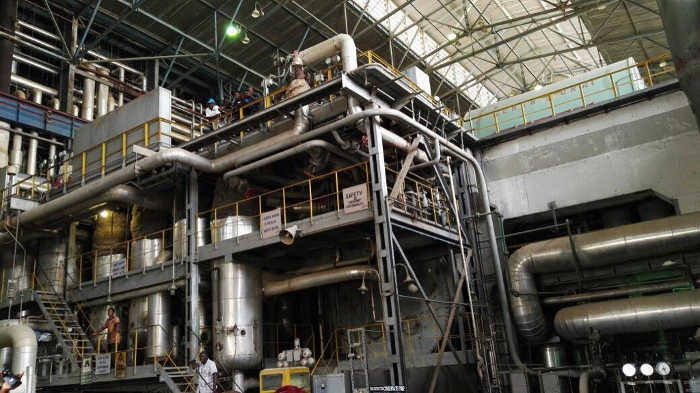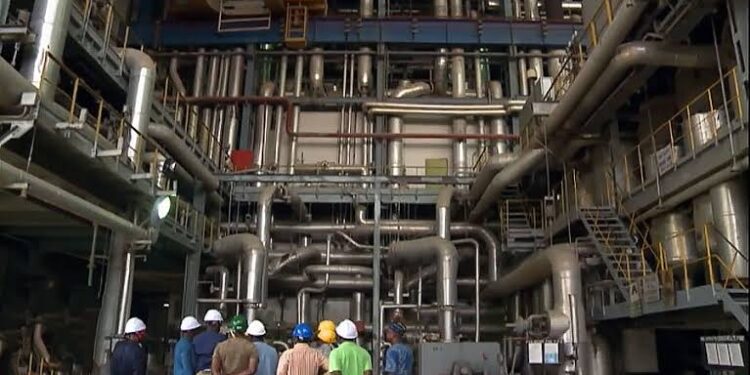Here we go again, another Memorandum of Understanding (MOU), another promise, another hope of resurrecting the long-dead Ajaokuta Steel Complex. This time, the Federal Government has teamed up with Messrs Tyazhpromexport (TPE) to revive not only Ajaokuta but also the National Iron Ore Mining Company (NIOMCO). The very same steel plant that’s been around since 1979 and has yet to produce a single sheet of steel. If you’ve heard this story before, it’s because it’s been on repeat for decades.
The new MOU was signed in Moscow, Russia, by Nigeria’s Minister of Steel Development, Shuaibu Audu, on behalf of the Federal Government. According to the ministry’s spokesperson, Salamotu Jibaniya, this deal is supposed to breathe life into Ajaokuta Steel and make it functional, something previous administrations have promised but failed to deliver.
Why It Matters
Let’s take a stroll down memory lane. Conceived in 1979, Ajaokuta was meant to be a game-changer, an industrial hub that would finally set Nigeria on the path to becoming a steel-producing giants. Instead, corruption, legal disputes, and sheer neglect turned it into a national embarrassment. Decades later, we’re still importing billions of dollars’ worth of steel, while Ajaokuta remains a glorified scrap yard. But here we are again, signing yet another MOU.

Minister Audu, fresh into his role, has promised Nigerians that the complex will finally begin production, and we’ll stop importing steel. How? Well, experts from TPE have already visited Ajaokuta and the Itakpe iron ore mining site, followed by this grand MOU-signing ceremony. According to Audu, this is a “bold step” toward Nigeria’s industrialization.
Joining in the MOU are Novostal M and Proforce Manufacturing Limited, part of the TPE consortium, who will supposedly ensure the revival of both Ajaokuta Steel and NIOMCO. The Nigerian delegation, which included Audu and other officials, even visited Novostal M’s facilities in Russia. According to Demchenko Ivan Ivanovich, the President of Metallurgical Holding, they are ready to submit a detailed proposal after conducting a comprehensive audit of the plant.
Here’s where the optimism starts to fizzle out. How many audits, proposals, and “bold steps” do we need before Ajaokuta actually starts producing steel? This isn’t the first time foreign partners have been brought in to save the day. What makes this deal any different?
The MOU promises the creation of over 500,000 direct and indirect jobs, along with a boost to the Nigerian economy that could help President Tinubu achieve his goal of a $1 trillion economy by 2030. Big words, but we’ve been here before. For Ajaokuta to actually contribute to Nigeria’s industrial growth, we need more than just signed agreements and fancy trips to Russia. We need real, tangible results and fast.
What They Are Saying
The Russian consortium has pledged to meet the expectations of the agreement. Still, they’ve asked the Nigerian government to provide an “enabling environment.” Translation: Fix your infrastructure, cut the red tape, and get corruption under control. If Nigeria can’t provide this so-called enabling environment, Ajaokuta might remain stuck in its endless cycle of false starts and empty promises.
“The parties expressed their optimism that the full implementation of the MoU will facilitate the revival of both ASCL and NIOMCO and could create over 500,000 direct and indirect jobs for Nigerians and increase the size of the economy by billions of dollars thus contributing immensely to President Tinubu’s desire to grow the economy to over $1tn by 2030.”
Bottom Line
Can we finally get it right this time? Or will Ajaokuta continue to be a national symbol of broken promises?

















